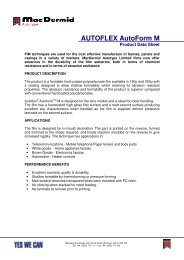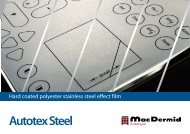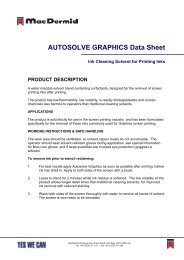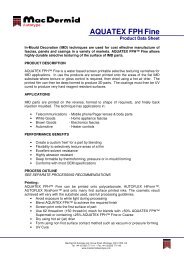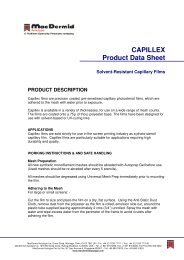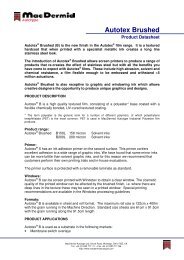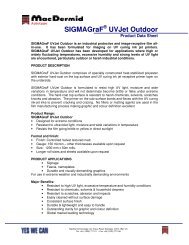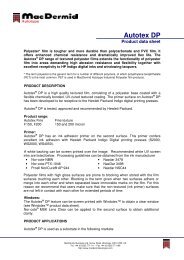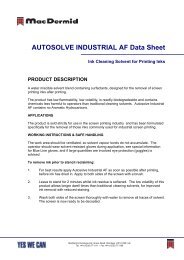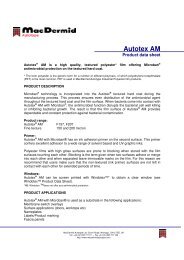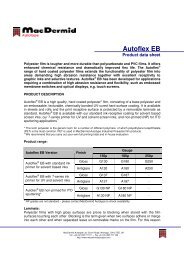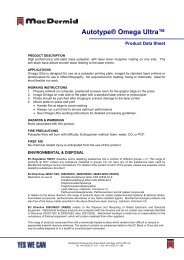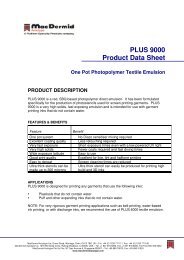Screen E-Book (.PDF) - MacDermid Autotype
Screen E-Book (.PDF) - MacDermid Autotype
Screen E-Book (.PDF) - MacDermid Autotype
- No tags were found...
You also want an ePaper? Increase the reach of your titles
YUMPU automatically turns print PDFs into web optimized ePapers that Google loves.
amplitude of the effect in a single direction,the moiré becomes more visible (thecomputer model confirms this). So if youchoose an asymmetric dot shape (to avoidthe tone-jump problems with symmetricdots) it’s a good idea to use the minimumasymmetry that will solve your tone-jumpproblems.Out of interest I show a moiré that seemedto be hard to explain. The printer was sofed up with 15° moiré that he decided toprint CMK at 72 lpi and Y at 55 lpi. This indeedremoved the 15° moiré. But it introducedan even uglier, low frequency moiré.It was a pleasant confirmation of the powerof the computer model that the calculatedmoiré exactly matched what was seen inthe print.Finally, some advanced RIP suppliers offera choice of a 15° with a certain degreeof stochastic content. As you go higher instochastic content the moiré disappears,but to some eyes the print starts to lookuglier. With a good RIP you can get the balanceright, just bringing down the visibilityof the moiré without destroying that comfortinghalftone look in your print.3 – Unstable Rosette MoiréOur beloved rosettes are a form of highfrequency moiré. Because they are highfrequency, we don’t really notice them,indeed we instinctively have a nice warmfeeling about a nice rosette. But there’s anugly side to the rosette. In general, it is anunstable configuration. I’d have to go intosome hairy maths to describe all this, butFigure 9. A moiréas a result oftrying to be tooclever.117



